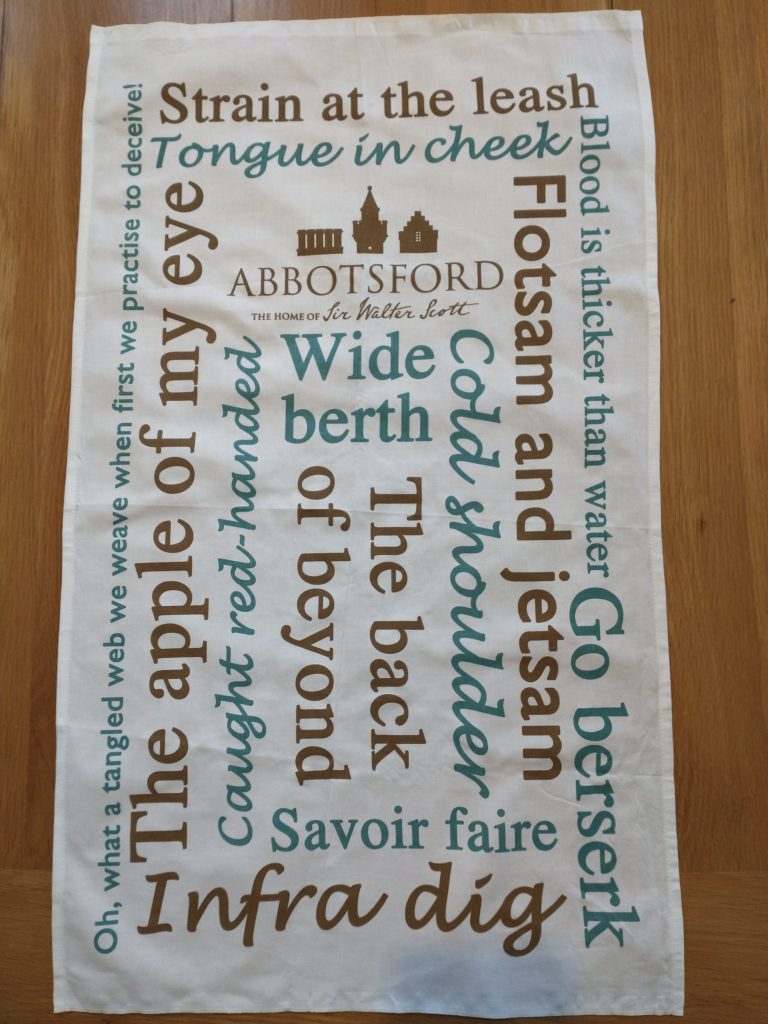Recently we had the absolute pleasure of a few days stay for a family celebration at Abbotsford, the home of Sir Walter Scott – one of Scotland’s most famous writers. Among the many wondrous things of this wondrous house was the thunderbox, found amid the maze of corridors off the kitchen.

An object of fascination and some fear for the children of the party, they were curious as to why it was called a thunderbox. The answer was much more mundane than I expected. It is a thunderbox because of …er… the noise it makes when in use. I’ll leave the rest to my reader’s imagination, although I do have one final thought to add – which you’ll find at the end (appropriately enough) of the blog.

There were three staircases in this maze of a house and according to my fitbit I managed to climb 111 floors in three days. It felt like much more. By the final day I was beginning to get some sense of the layout but the chances of getting lost on any journey between lower ground floor kitchen and top floor bedroom were always considerable. The kids loved it – actually we all did.

The house was designed by Sir Walter Scott and, after his death in 1832, was opened to the public who came in their droves. We stayed in a wing which includes the oldest part of the building, as well as the library where Scott worked before the main house was built. Of course I went there to write and actually had quite a productive time – I’d like to think I was channelling Scott …who knows!

The house is built with all Scott’s vivid imagination, baronial splendour and love of Scotland. Below is a door he rescued from the old Tollbooth in Edinburgh, demolished in 1817, and which he had inserted high into the wall of his home.

In the garden there are several sculptures including this of Morris, one of the characters from Rob Roy. Morris is on his knees begging forgiveness from Helen MacGregor-Campbell after betraying her husband, the eponymous Rob Roy, to the authorities. The hands are still a solid block because the sculptor, John Greenfield, died before he could finish the work.

But his determination to create his dream house, gardens and estate (he was an early conservationist and planted hundreds of trees) nearly destroyed Scott. He ended up in debt to the tune of £10 million in today’s money.

And my buy of the short break was a tea towel with some quotes from Scott’s novels which are now common parlance…

This is a magical place to stay, lovingly cared for and remarkably warm for an old house during a storm ridden few days in February.

PS The original thunderboxes, in the days before indoor plumbing, would have consisted of a metal bucket beneath the seat – which no doubt made a fairly thunderous noise when used!

One Reply to “Why is it called a Thunderbox?”